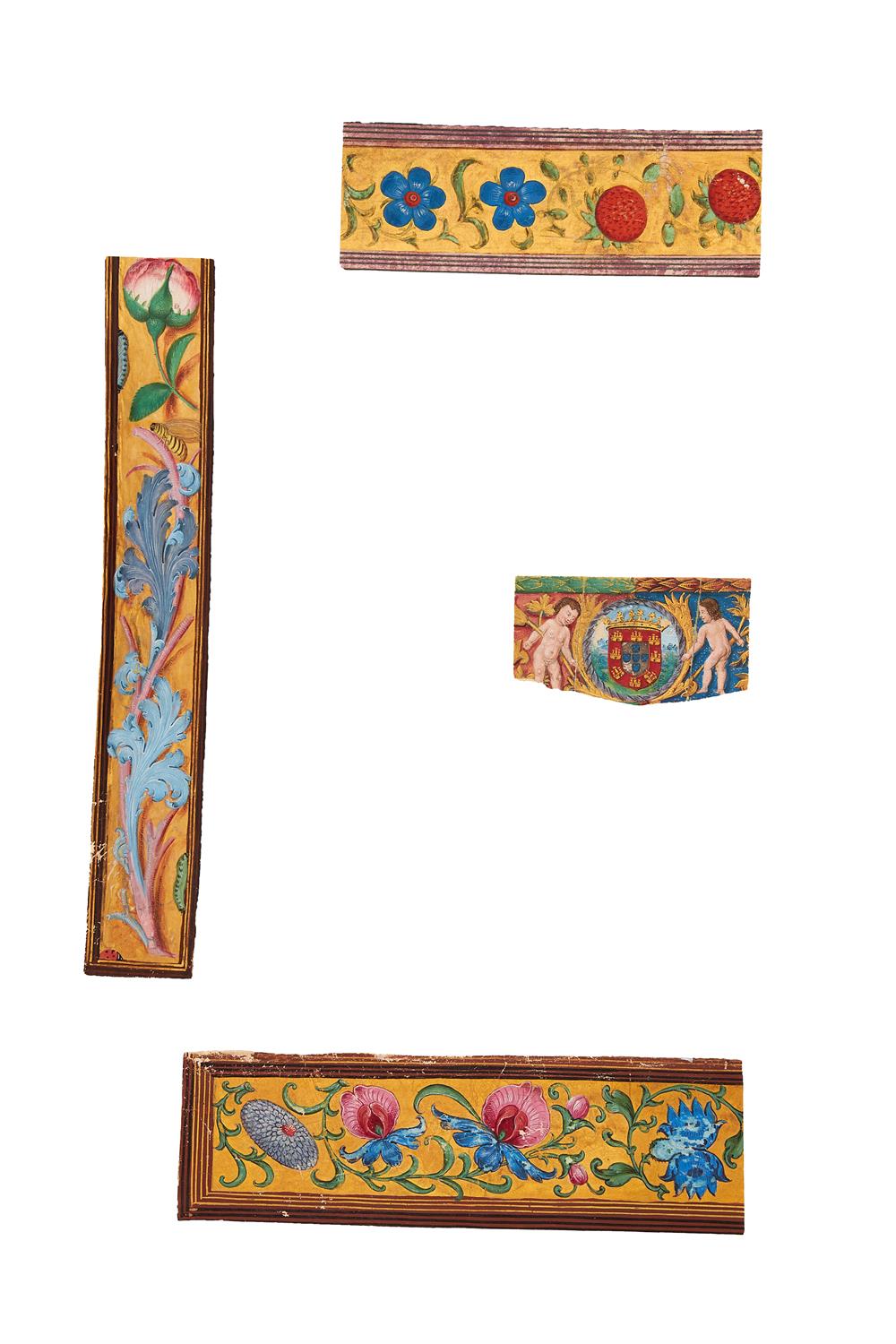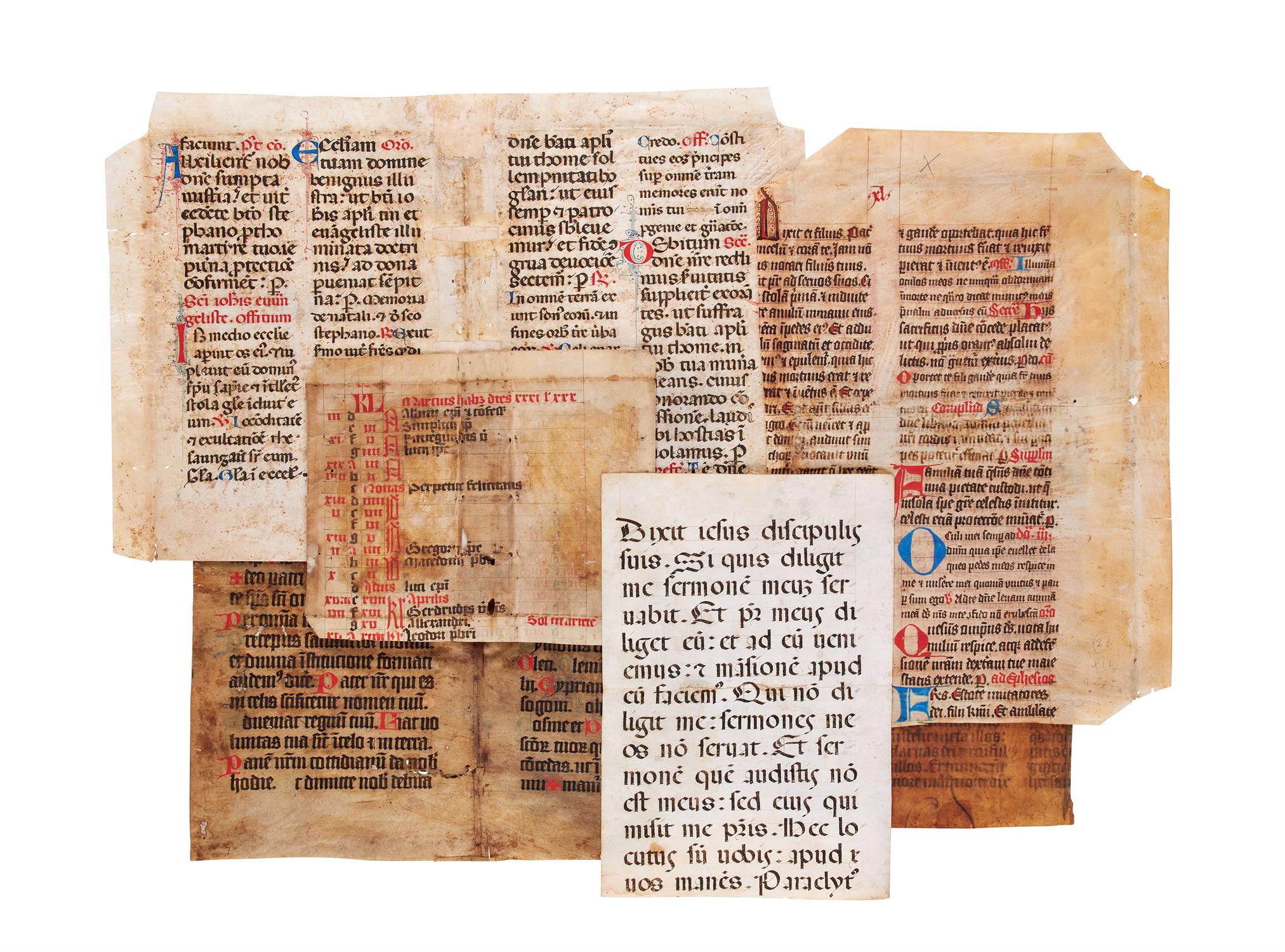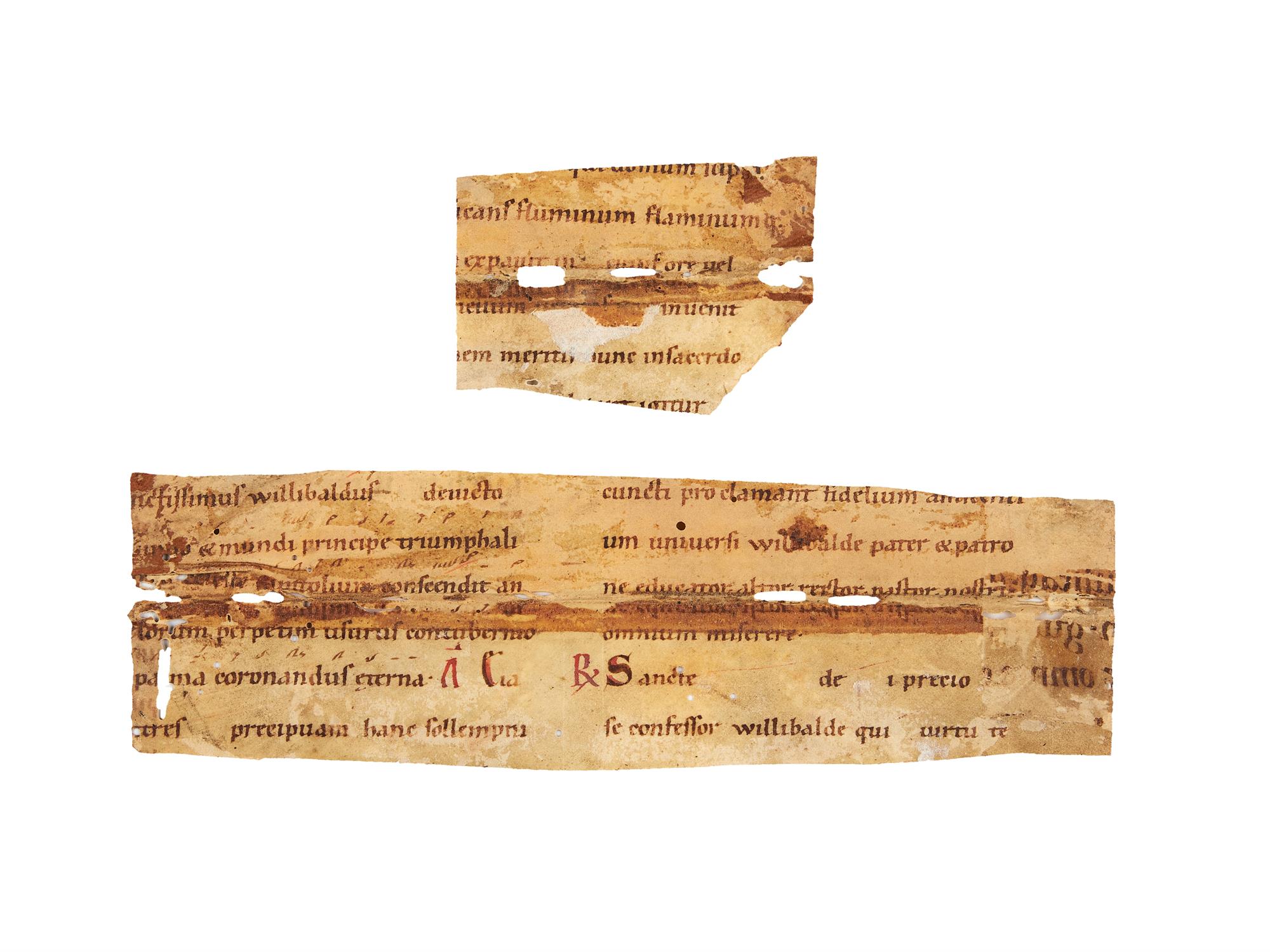Four cuttings from a decorated Romanesque copy of Priscian, Institutiones Grammaticae, in Latin with a single word in Greek, on parchment [Germany, twelfth century] Four rectangular cuttings (two half leaves bisected laterally, and two quarter leaves: the largest piece 165 by 125 mm.), with remnants of single column, 18 lines in a handsome miniature Romanesque script, capitals touched or dotted in red, rubrics in capitals underlined in red or in red in margin, seven simple red initials (some in flowing brushstrokes, others with baubles mounted in their bodies), remains of a red line-drawn cat-like creature standing on its hind legs to form an initial ‘I’, tiny contemporary marginal and interlinear reference notes, all recovered from bindings with concomitant scuffs, stains and folds, the smaller two pieces cockled and damaged at edges from heat exposure, overall fair condition Priscian (or more correctly Priscianus Caesariensis), lived around the turn of the sixth century AD. during the final collapse of the Roman Empire. He was born in the North African city of Caesarea and taught Latin at Constantinople. This work was the result of those years spent teaching, and despite the author’s intention that it should be used by those in the Eastern Empire to learn Latin, it became the mainstay of the Western medieval world from the Dark Ages through to the sixteenth century to relearn the language of Ancient Rome. No monastery, cathedral or secular-school could be without a copy, and thus 527 medieval manuscripts are recorded today, with 283 of those in existence by the end of the twelfth century (see M. Gibson in Scriptorium 26, 1972). For modern scholarship, the work is the foundation of all grammars, as well as a storehouse of lost Roman works in the author’s frequent citation of the texts available to him in the sixth century. Here are references to the great orator and philosopher Cicero (106-43 BC.) and the playwright Plautus (c. 254-184 BC).
Four cuttings from a decorated Romanesque copy of Priscian, Institutiones Grammaticae, in Latin with a single word in Greek, on parchment [Germany, twelfth century] Four rectangular cuttings (two half leaves bisected laterally, and two quarter leaves: the largest piece 165 by 125 mm.), with remnants of single column, 18 lines in a handsome miniature Romanesque script, capitals touched or dotted in red, rubrics in capitals underlined in red or in red in margin, seven simple red initials (some in flowing brushstrokes, others with baubles mounted in their bodies), remains of a red line-drawn cat-like creature standing on its hind legs to form an initial ‘I’, tiny contemporary marginal and interlinear reference notes, all recovered from bindings with concomitant scuffs, stains and folds, the smaller two pieces cockled and damaged at edges from heat exposure, overall fair condition Priscian (or more correctly Priscianus Caesariensis), lived around the turn of the sixth century AD. during the final collapse of the Roman Empire. He was born in the North African city of Caesarea and taught Latin at Constantinople. This work was the result of those years spent teaching, and despite the author’s intention that it should be used by those in the Eastern Empire to learn Latin, it became the mainstay of the Western medieval world from the Dark Ages through to the sixteenth century to relearn the language of Ancient Rome. No monastery, cathedral or secular-school could be without a copy, and thus 527 medieval manuscripts are recorded today, with 283 of those in existence by the end of the twelfth century (see M. Gibson in Scriptorium 26, 1972). For modern scholarship, the work is the foundation of all grammars, as well as a storehouse of lost Roman works in the author’s frequent citation of the texts available to him in the sixth century. Here are references to the great orator and philosopher Cicero (106-43 BC.) and the playwright Plautus (c. 254-184 BC).












Testen Sie LotSearch und seine Premium-Features 7 Tage - ohne Kosten!
Lassen Sie sich automatisch über neue Objekte in kommenden Auktionen benachrichtigen.
Suchauftrag anlegen